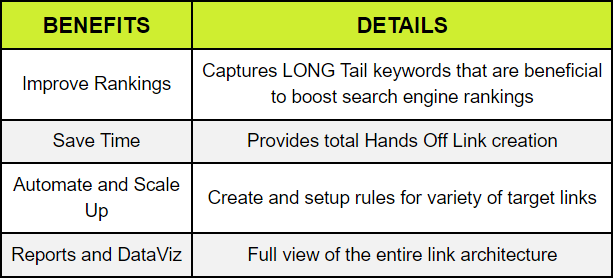How to design Manufacturing websites and rank higher on Google
The goal of a strong web presence has always been to turn visitors into believers in your products, and eventually prompt them to make a purchase. If only for this reason, a manufacturer, like any other business venture, needs websites too for both growth and success. To ensure that you reach the goals that you’ve set for your organization, it’s a good start to learn about the web design process first.

Designing Your SEO Website
The web design process for a manufacturing business includes:
- Interview with the customer
- Develop content wireframe (the floor plan for your website)
- Create plan for site design
- Design phase
- Create graphic design mockup for the site
- Conduct feedback conversation about the design
- Implement feedback and revisions
- Develop content
- Content writers create first draft of copy
- Copy is presented to you for feedback
- Implement feedback and revisions
- Develop website
- Developers turn design into a functioning site
- Google analytics and tracking codes are added
- Hold final review session
- Launch the site
Experienced web developers, equipped with technical expertise while armed with tried and tested methodologies, could help you create a website that would convert potential customers into paying patrons.
There are numerous ideas that your manufacturing company can conceive, in tandem with a web builder, as you go along the web design process. Here are important points to consider:
- Look trustworthy and reliable. Your website design should reflect the actual nature of your business. Businesses in the fashion and beauty industry may be bursting with color and art while those in mining may find effective use of darker elements. Manufacturers should use light backgrounds and solid texts. The colors of your logo should also be incorporated in your motif. This will give your site an overall look and feel of professionalism and trustworthiness enough to engage your visitors.
- Use high quality images. The images need not be stunning. Pictures of your organized and clean facilities and employees in high spirits should be enough to reflect the core values that your business holds dear: efficient and happy workers, high efficiency, quality products, customer satisfaction, and more. Your web developer could share your pictures in such a way that your visitors could associate with the human elements of your company.
- Choose an appropriate color palette. There are studies which indicate that color is a key factor in forming positive opinion about an organization or a product. Your color scheme is, therefore, essential in swaying your potential customers to take positive action.
Here are color tips that will greatly improve your conversion rate:
- Women don’t like orange, gray, and brown. They like green, blue, and purple.
- Men don’t like orange, purple, and brown. Men like green, blue, and black.
- Use blue in order to build user’s trust. Blue is generally considered as the color of peace, loyalty, and order. It is also the color of corporate America. Never use blue for anything related to food though.
- Yellow is for warnings. Color experts say that yellow activates the anxiety center of the brain, so use yellow in limited doses.
- Green is great for outdoor and environmental products. It is also a good color for calls to action.
- Orange, when used sparingly, stimulates confidence, competition and physical activity and is used frequently in selling children’s products and sporting goods. It also suggests urgency and makes a message stand out. However, don’t overwhelm your site with orange as it is considered as cheap, unless you want your products to be interpreted as such.
- Black indicates a sense of value and luxury. It is almost always regarded as the timeless and classic color of elegance, power, and sophistication.
- For high conversion rates, use intense primary colors, as well as orange and green for your call to action.
- Extensive use of white is a potent design strategy. It evokes a sense of freedom and breathability.
- Give importance to easy navigation. Links, sitemaps, and breadcrumbs are helpful elements of site navigation if only to keep your visitors on your page. Ask yourself these guiding questions:
- Can they quickly return to the previous page with a single click?
- Can they easily jump to another relevant page from their current location?
- Can they easily go back to the homepage from anywhere on the site?
If you answered ‘no’ to any one of these questions, consider revising you wireframe or tweaking an existing site. Any customer who gets lost in your site could easily click the Back button and consider visiting your competition.
- Design pages with your visitors in mind. Always assume that your audience is composed mostly of professionals who are eager to deal with you on behalf of their companies. Make your visitors feel that you recognize their importance as decision-makers and potential business partners.
- Make sure your site loads fast. Potential customers go online because they don’t have the time to go to physical stores. To them every second counts. When your site takes a long time to load, you’ll lose them to your competitors.
SEO for Your Manufacturing Company
Local SEO is essential for both B2B and B2C marketing strategies because when your site ranks high on results pages, you get traffic. Do the following:
- Generate excellent on-page content. Write copies with your users in mind first and the search engines second. Put yourself in your users’ point of view. What do they want to know about your company and products? Why should they choose your product line over what your competitions had to offer? What special details should they know that could sway them into considering a purchase? Then proceed to develop content based on your answers.
Your blog posts must be interesting, informative, and sprinkled with targeted keywords. Great content will generate hits and will boost your reputation as a relevant and legit site and will cause your SEO ranking to rise on results pages.
- Optimize your site with efficient and descriptive metadata. Metadata generally means “data about data” which makes tracking and working with specific data easier. Typical metadata includes title and description, tags and categories, author or creator, when created, who last modified and when, and who can access or update.
Metadata is invisible to your customers and is not considered in your website’s ranking on search engines.
SEO metadata is what appears on results pages or SERPs when a search engine sends suggestions for certain queries. It includes the heading of your webpage and its metadescription (that text below the bold heading that gives a short summary about your site). Metadata therefore plays a persuasive role in making sure that users click through to your site.
- Build links. Link building is a challenge for manufacturers but with great content, you will have the confidence to invite other websites to connect to your site. If for example you’re a tool manufacturer, you might consider connecting to websites of contractors devoted to home improvement. To make it worth you’re their while, you can write content on an interesting topic (like turning a closet into a home office) and establishing a link to your product line.
Looking for these linking opportunities may require a lot of time, but it will ultimately yield for you increased traffic, improved search engine rankings, and most importantly, more leads.
Take advantage of social media
Social media channels can provide additional links to your website and improve your SE ranking.
As a manufacturer, you should be cultivating your presence on:
- LinkedIn. LinkedIn is populated by business leaders and managers who make decisions for their company. For this reason alone, it’s a great place to share your blog content for establishing your expertise and credibility in your industry.
- You may start with an engaging company intro video. Then consider uploading videos of your manufacturing processes, your employees in action, helpful tips when using your product line, step-by-step installation guides, and other how-tos.
Keeping your channels updated with at least a once-a-month-upload of videos and informative blogs can help establish your site’s rankings through increased traffic volume to your content.
* * *
At first, SEO can be a daunting task for manufacturers. However, developing on-page optimization and using social media channels can signal search engines that your site is an authority in your industry. Relevant traffic to your well-designed website would generate the leads that’d make your business prosper.
Want help with SEO and Web Design?
At CrawlSpider ( a Pittsburgh Web Design SEO Agency) we work with manufacturing businesses in various aspects of increasing their online presence. This includes revamping their old Adobe Flash infested websites to modern and fresh looking with easy to find content. The primary goal is to increase sales and leads via the websites. Having a good looking website is the first step. Followed by a solid SEO and Content marketing strategy.

